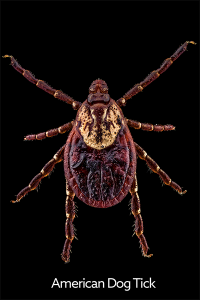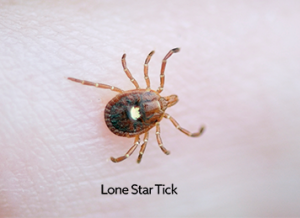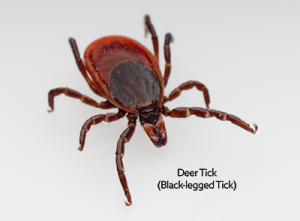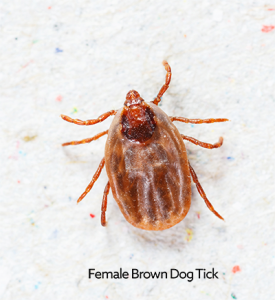Ticks are more than just creepy pests, they can spread a number of different diseases that affect both pets and people
- Ticks can transmit Lyme disease, Ehrlichia, Rocky Mountain Spotted Fever, anaplasmosis, tularemia, and babesia.
- The best way to treat an illness is to prevent it in the first place. Ask your Veterinarian about Flea/tick preventatives.
- Depending on where you live and your pet’s risk factors, a veterinarian may also recommend additional protection like a vaccination for Lyme disease.
- Although these preventative measures are effective, it is important to note that none provide 100% protection.
- Ticks bury their head into a host’s skin when they bite and then gorge themselves on blood.
- Ticks tend to be most active in late spring and summer and live in tall brush or grass, where they wait to attach to their host.
- Ticks can be transferred from pets coming into the household from outdoors.
- Ticks prefer to attach close to the head, neck, ears and feet, but can be found anywhere on your pet’s body.
Signs and symptoms of tick-borne Illnesses
- Ticks can spread a number of different diseases, so the signs and symptoms can vary depending on the disease.
- Some of the signs seen in several of these illnesses include: lethargy (loss of energy), loss of appetite, and lameness or reluctance to move.
- It is important to realize that more often than not the signs of a tick borne illness may be either very subtle or non-existent. In addition, many of the tick-borne illnesses mimic other diseases.
- Therefore it is best not to wait for symptoms to appear. If your pet has been exposed to ticks speak with your veterinarian immediately about screening tests and preventative products.
Types of Ticks
- Ticks wait for host animals on the tips of grasses and shrubs. When the plant is brushed by a moving animal or person, the tick quickly lets go of the vegetation and climbs onto the host.
- Ticks can only crawl; they cannot jump or fly. Some species of ticks will crawl several feet toward a host. Some tick species can be active on winter days if the ground temperatures are above 32 °F (0 °C).
- Although there are at least 15 species of ticks in North America, only a few of these species are likely to be encountered by your dog. They include American dog tick, lone star tick, deer or black-legged tick, and brown dog tick.





Recent Comments